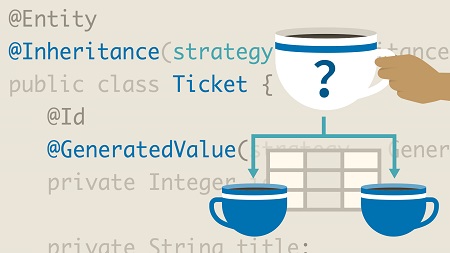
English | MP4 | AVC 1280×720 | AAC 48KHz 2ch | 1h 48m | 300 MB
The Java Persistence API (JPA) is the standard for mapping Java objects to relational databases. In this second course of the JPA series, Kesha Williams discusses inheritance mapping strategies, Java Persistence Query Language (JPQL), the Criteria API, and persistence providers. She explains how inheritance functions when working with mappings, classes, superclasses, and tables. She demonstrates how to create queries, use native queries, and query using streams. Then, she shows how to create query relationships using joins. Additionally, Kesha compares persistence provider options, and shows how to switch between providers.
Topics include:
- Inheriting entities
- Mapping a superclass
- Querying through JPA
- Defining query parameters
- Creating a compile-time named query
- Using native queries
- Creating stored procedures
- Using the Criteria API
- Refining query results
- Switching between persistence providers
Table of Contents
Introduction
1 Use JPA for inheritance and querying
2 What you should know
3 Development environment setup
4 Project application introduction
5 Project application in action
Inheritance Mapping Strategies
6 Entity inheritance strategies overview
7 Mapped superclass
8 Mapped superclass – Demo
9 Single table
10 Table per class
11 Joined table
Java Persistence Query Language JPQL
12 What is JPQL
13 Create simple queries with JPQL syntax
14 Create complex queries with setParameter
15 Create compile-time named queries
16 Create native queries
17 Create stored procedures
18 Query using streams
Criteria API
19 What is the Criteria API
20 Create queries with Criteria API
21 Query relationships using joins
22 Restrict criteria query results
Persistence Providers
23 Overview of persistence providers
24 Persistence provider comparison
25 Change providers
Conclusion
26 Next steps
Resolve the captcha to access the links!